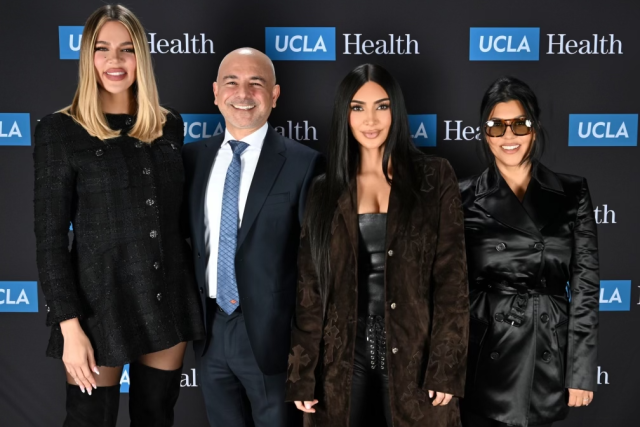HIV vaccines are considered the holy grail of AIDS research. The availability of a safe and effective vaccine could prevent millions of new HIV infections. Yet the simple availability of a vaccine is not enough to ensure that it would actually be widely accessible and taken by people at risk for HIV.
Though each year sees 2.5 million new HIV cases worldwide — including 55,000 in the United States — questions about a vaccine's effectiveness and potential side effects, and fears that it might encourage risky behavior, could be stumbling blocks to widespread acceptance.
To address these issues, UCLA and University of Toronto researchers undertook the LA VOICES study. LA VOICES used a unique cross-sectional analysis to determine the acceptability among vulnerable groups of a Food and Drug Administration–approved vaccine, should one be developed. The researchers found that a vaccine's effectiveness would have the greatest impact on its acceptability, followed by side effects and out-of-pocket costs.
"An HIV vaccine would be the ideal means to control the HIV epidemic," said principal investigator Dr. William Cunningham, professor of general internal medicine and health services research at the David Geffen School of Medicine at UCLA and the UCLA School of Public Health. "Nevertheless, we know from vaccines for other diseases that mere availability is not sufficient. The vaccine must be acceptable and accessible to people, particularly those at highest risk, in order to facilitate uptake."
The study, published in the December–January issue of the peer-reviewed journal Health Services Research, relied on data from a random sample of 1,100 high-risk Los Angeles County adults who were recruited from STD clinics, needle-exchange programs and Hispanic primary health care centers.
Using an innovative method called conjoint analysis, the researchers gave participants cards representing vaccines with various characteristics, such as 50 percent or 99 percent effectiveness; few or no side effects; costs of $10 or $250; and one-year or 10-year protection, and asked the participants to rate the acceptability of each. Participants were, however, asked to make trade-offs designed to tease out the vaccine characteristics most important to them. For example, one card would describe a vaccine with 99 percent effectiveness but with minor side effects and a cost of $250, whereas another would describe a vaccine that would be only 50 percent effective but have no side effects and cost only $10.
Participants were moderately accepting of an HIV vaccine overall, giving it a mean score of 55 on a 100-point scale, a finding that, while still positive, indicates that acceptability should not be taken for granted. Vaccine efficacy — or how effectively it would prevent infection — was the most important factor in boosting acceptability, followed by possible side effects and out-of-pocket costs.
Also, 10 percent of at-risk adults indicated they would engage in more risky behavior if they were vaccinated. However, on a positive note, they were less likely to do so if the vaccine was only 50 percent effective versus 99 percent effective, suggesting they would adjust their behavior and expectations accordingly.
The study does have some limitations. For instance, it relies on the participants' stated intentions, which are "imperfect proxies of behavior," the researchers noted. Also, the findings may not be applicable to other locations and populations, and the study may have excluded other factors that could impact HIV vaccine use.
But the findings do suggest that educational and social marketing interventions could help to increase the acceptability and uptake of HIV vaccines that might be developed in the future, said lead study author and co-principal investigator Dr. Peter A. Newman, an associate professor at the University of Toronto's Factor–Inwentash Faculty of Social Work, who holds the school's Canada Research Chair in Health and Social Justice.
For example, Newman explained that the public usually equates vaccination with complete protection against a disease. Education should address this understandable preconception and promote the benefits of a partially effective HIV vaccine, to be used in combination with existing forms of prevention, like condom use.
"Interventions should aim to increase acceptance of partially effective HIV vaccines, which may nevertheless have a very positive impact in controlling the epidemic," Newman said. "This is particularly important, as initial HIV vaccines may be only partially effective rather than providing complete protection against HIV infection."
Behavioral interventions, designed for use alongside HIV vaccines and targeted cost subsidies for low-income individuals, could also contribute to HIV vaccine acceptance, he said.
Grants from the National Institute of Mental Health, the Canada Research Chairs Program, the Social Sciences and Humanities Research Council of Canada, the National Center on Minority Health and Health Disparities, and the National Institute on Aging funded this study.
Other researchers included Sun-Jae Lee, Terry K. Nakazono, John Boscardin, Steven Shoptaw and Allison Diamant of UCLA; Naihua Duan of Columbia University and the New York State Psychiatric Institute; Ellen Rudy of the Los Angeles County Department of Health Services; and Lisa Kakinami of the University of Rochester.
The General Internal Medicine and Health Services Research Division in the department of medicine at the David Geffen School of Medicine at UCLA provides a unique interactive environment for collaborative efforts between health services researchers and clinical experts with experience in evidence-based work. The division's 100-plus clinicians and researchers are engaged in a wide variety of projects that examine issues related to access to care, quality of care, health measurement, physician education, clinical ethics and doctor-patient communication. Researchers in the division have close working relationships with economists, statisticians, social scientists and other specialists throughout UCLA and frequently collaborate with their counterparts at the RAND Corp. and the Charles Drew University of Medicine and Science.
For more news, visit the UCLA Newsroom or follow us on Twitter.



